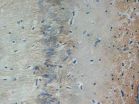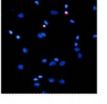(Press-News.org) Discovery of a new mechanism of drug action could lead to the next generation of drugs to treat schizophrenia.
Affecting one per cent of the world's population, schizophrenia is a major health condition. It affects a person's ability to think, feel and act and is associated with distressing symptoms including hallucinations and delusions.
New Monash University findings, published today in the journal, Nature Chemical Biology, offer hope of a new class of drug that can act as a "dimmer switch" to control schizophrenia, without causing some of the common side effects associated with current anti-psychotic medicines.
One of the lead researchers of the study, Dr Rob Lane from the Monash Institute for Pharmaceutical Sciences (MIPS) said all current anti-psychotic medicines block the action of dopamine, a neurotransmitter, at a brain protein called the dopamine D2 receptor, resulting in serious side effects.
"These medications frequently result in serious side effects because this protein is also important for the control of movement. The side-effects can sometimes persist even after the patient has stopped taking the medication," Dr Lane said.
Co-lead researcher Professor Arthur Christopoulos, said gaining a better understanding of the biology of schizophrenia will lead to more effective drugs.
"The idea behind our research is to develop a drug that doesn't completely block dopamine. We found a molecule that, rather than blocking the effect of dopamine at the D2 receptor, acts to subtly dial down dopamine's effect, a bit like a dimmer switch," Professor Christopoulos said.
"This means that if we can get just the right amount of dial-down, we could treat the symptoms of the disease and avoid some of these side-effects.
"We're a long way yet from developing a drug, but our dimmer switch approach to controlling schizophrenia means it's conceivable we could have a whole new class of anti-psychotics in the future."
The research team also found a unique twist with the molecule, its mechanism of action changed depending on the arrangement of the D2 receptor in the brain.
Dr Lane said not only does this represent a new approach to develop anti-psychotics, it gives researchers more information about the protein involved in the disease.
"This extra information will help researchers develop new drugs that target the protein," Dr Lane said.
The next phase of the research will see Dr Lane and Professor Christopoulos collaborate with chemists at MIPS to try to develop a better version of the drug used in the study.
INFORMATION:
'Dimmer switch' drug idea could tackle schizophrenia without side effects
2014-08-11
ELSE PRESS RELEASES FROM THIS DATE:
'Worm pill' could ease autoimmune disease symptoms
2014-08-11
Experts believe a molecule in parasitic worms could help explain why worm infections can effectively treat a range of autoimmune diseases, including multiple sclerosis, psoriasis, rheumatoid arthritis and lupus.
The Monash University study, published in the FASEB Journal, successfully identified peptides from parasitic worms that suppress the body's immune response. Researchers believe this could pave the way for a new drug containing the peptide to provide relief from the symptoms of autoimmune diseases.
Affecting as many as one in 20 Australians, autoimmune diseases ...
Autophagy is a new target for treatment of neuronal injury in the hippocampus of VD rats
2014-08-11
Autophagy is a basic catabolic mechanism by which unnecessary or dysfunctional cellular components are degraded by lysosomes. Damaged organelles such as mitochondria are scavenged by autophagic processes to maintain the stability of nerve cells. Excessive activation of autophagy leads to cell death. However, it remains unclear whether autophagy affects hippocampal neuronal injury in vascular dementia. Prof. Bin Liu and co-workers from the Affiliated Hospital of Hebei United University, China intraperitoneally injected wortmannin into a rat model of vascular dementia. They ...
Neuroprotective effects of Asiaticoside
2014-08-11
In the central nervous system, Asiaticoside has been shown to attenuate in vitro neuronal damage caused by exposure to β-amyloid. However, its potential neuroprotective properties in glutamate-induced excitotoxicity have not been fully studied. Researchers from Fourth Military Medical University of Chinese PLA, China reported that pretreatment with Asiaticoside decreased neuronal cell loss in a concentration-dependent manner and restored changes in expression of apoptotic-related proteins Bcl-2 and Bax. Asiaticoside pretreatment also attenuated the upregulation of ...
Selective verbal memory impairment due to left fornical crus injury after IVH
2014-08-11
The fornix, a part of the Papez circuit, transfers information of episodic memory between the medial temporal lobe and the medial diencephalon. It is difficult to precisely assess the fornix due to its long, thin appearance and its location within the brain. In addition, discrimination of the whole fornix from adjacent neural structure using conventional brain CT or MRI is impossible. By contrast, diffusion tensor tractography (DTT) has enabled three-dimensional visualization of the fornix, and many studies have reported on fornix injury using DTT. Dr. Sung Ho Jang and ...
New global research reveals significant shortfall in fruit and vegetable consumption
2014-08-11
New research published in the September issue of the British Journal of Nutrition highlights a significant shortfall in fruit and vegetable consumption in people's diets around the world. Commissioned by the Nutrilite Health Institute of Amway and conducted by Exponent, the research finds the majority of adults worldwide would have to at least double their current consumption of fruits and vegetables to meet the World Health Organization's minimum recommendation of five servings (400 grams) per day. Additionally, the vast majority of adults worldwide – 60 to 87% across ...
Study: new tool proves effective in evaluating doctor's bedside manner
2014-08-11
TORONTO, ON, Aug 11, 2014 —The best way to improve a doctor's bedside manner may lie in a new tool that evaluates and helps medical residents improve their communication and other soft skills to become better doctors, according to a new study led by Women's College Hospital's Dr. Tim Dwyer.
The study, published in the latest issue of the Canadian Journal of Surgery, is the first to look at the medical residents' collaboration, communication and other soft skills, or what are known as CanMEDS competencies, in orthopedic surgical training.
"While we do a great job at ...
Keeping filler ingredients out of your cup of coffee
2014-08-11
SAN FRANCISCO, Aug. 11, 2014 — Coffee drinkers beware: Surprise ingredients that are neither sweet nor flavorful may be hiding in your coffee, and growing coffee shortages may increase the chance of having these fillers in your cup of joe in the future. The good news is that a highly accurate test is in the works to quickly find coffee containing unwanted fillers before the beverage reaches stores and restaurants.
These extra ingredients, though not harmful, make ground coffee go farther and increase profits for producers, according to researchers. Their report will be ...
Solving a sticky problem with fetal surgery using a glue inspired by the sandcastle worm
2014-08-11
SAN FRANCISCO, Aug. 11, 2014 — In creating an adhesive patterned after glue produced by the lowly underwater sandcastle worm, researchers are reporting today that they may have solved the problem of premature births that sometimes result from fetal surgery. It also could open up numerous opportunities to safely perform more complex fetal surgeries in the future. Their report will be presented as part of the 248th National Meeting & Exposition of the American Chemical Society (ACS), the world's largest scientific society.
The meeting, attended by thousands of scientists, ...
Innovations with far-reaching potential for the environment and health
2014-08-11
SAN FRANCISCO, Aug. 11, 2014 — The Kavli Foundation Lecture series today features two prominent scientists: one in the booming area of ionic liquids, the other in medical materials. The former has made a novel compound with the potential to lower the energy it takes to capture carbon dioxide (CO2) from smoke stacks. The latter has engineered tissues and medical materials such as a stretchy glue that could transform surgery. They will make presentations today at the 248th National Meeting & Exposition of the American Chemical Society (ACS).
ACS, the world's largest scientific ...
Making cashews safer for those with allergies
2014-08-11
SAN FRANCISCO, Aug. 11, 2014 — For the millions of adults and children in the U.S. who have to shun nuts to avoid an allergic reaction, help could be on the way. Scientists are now developing a method to process cashews — and potentially other nuts — that could make them safer to eat for people who are allergic to them.
The researchers are presenting their work at the 248th National Meeting & Exposition of the American Chemical Society (ACS), the world's largest scientific society. The meeting, being held here through Thursday, features nearly 12,000 presentations on ...



